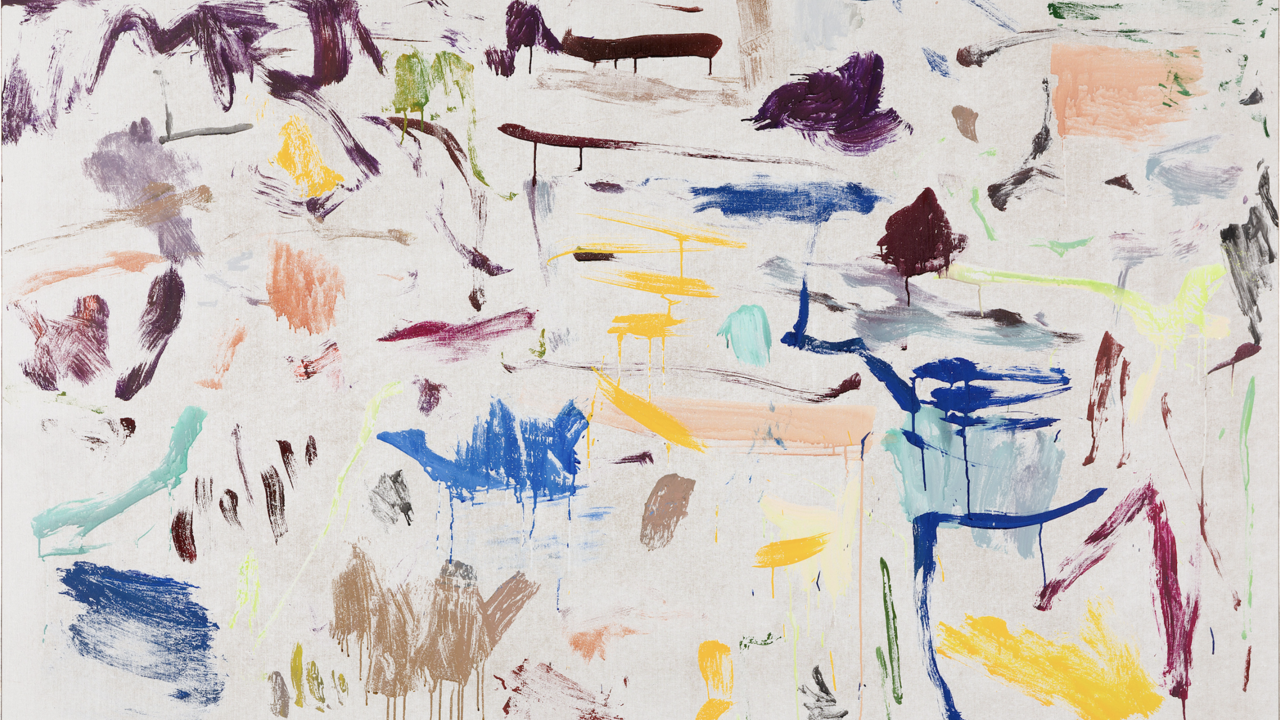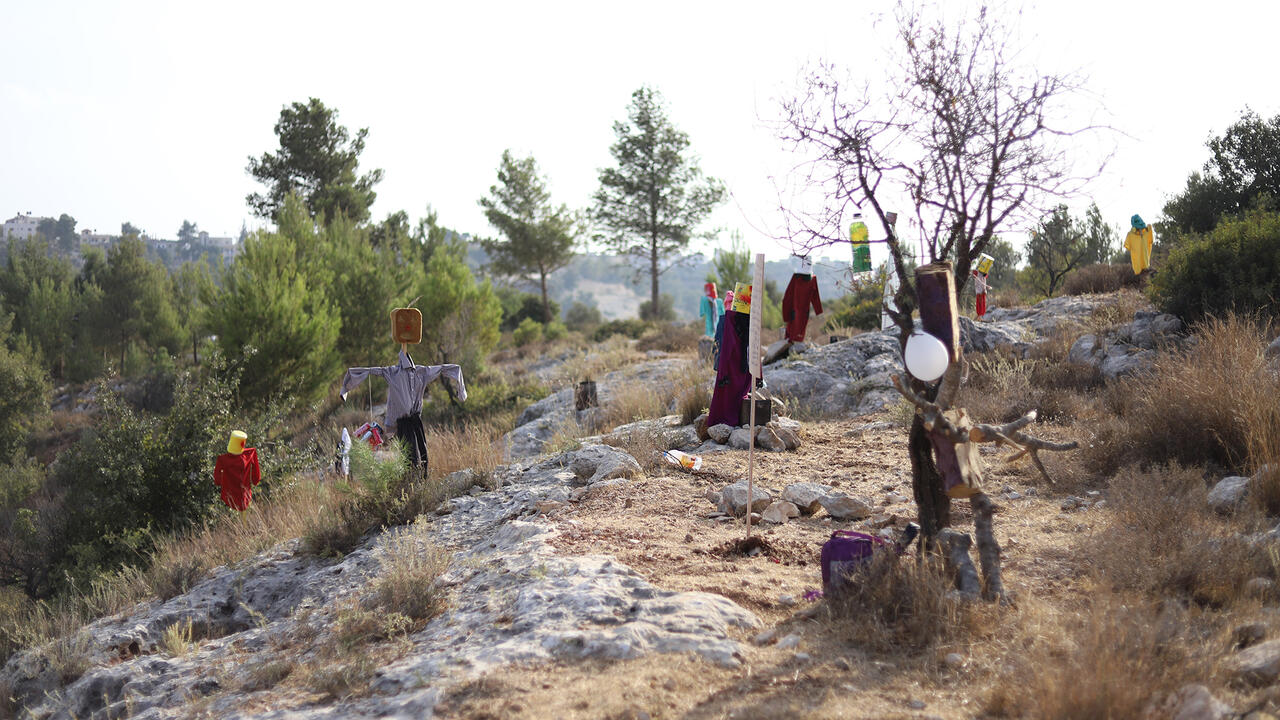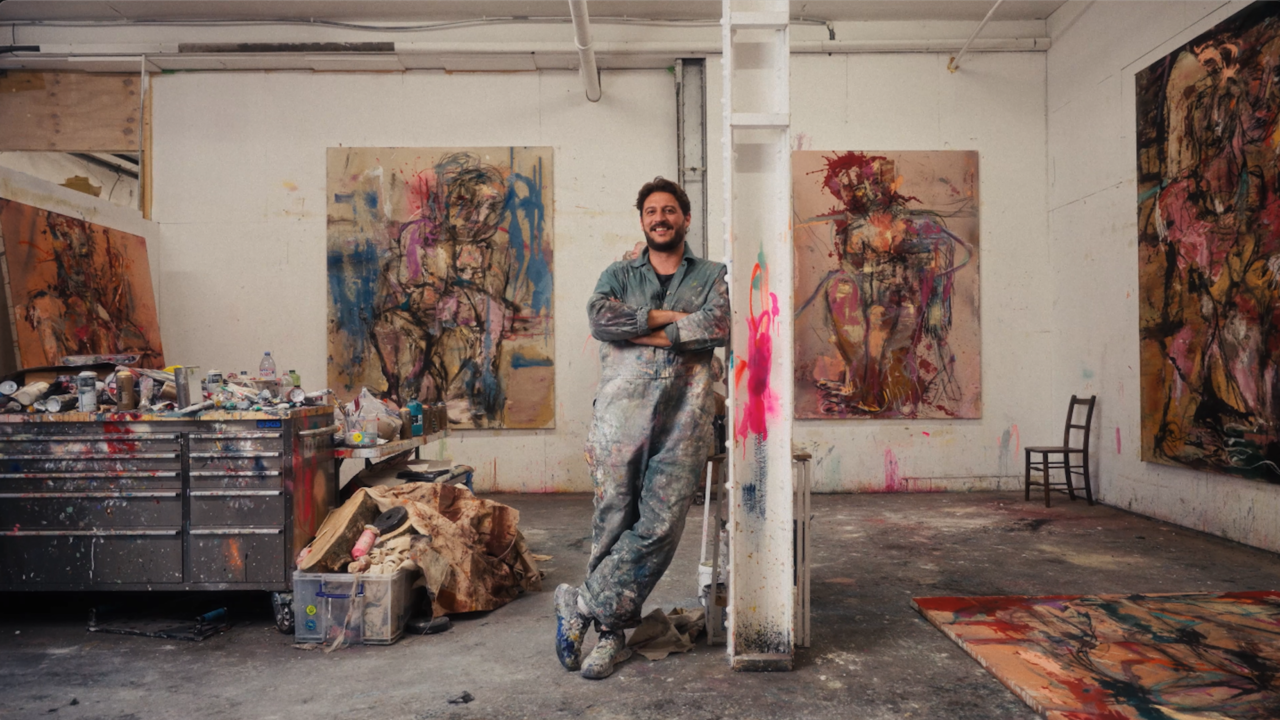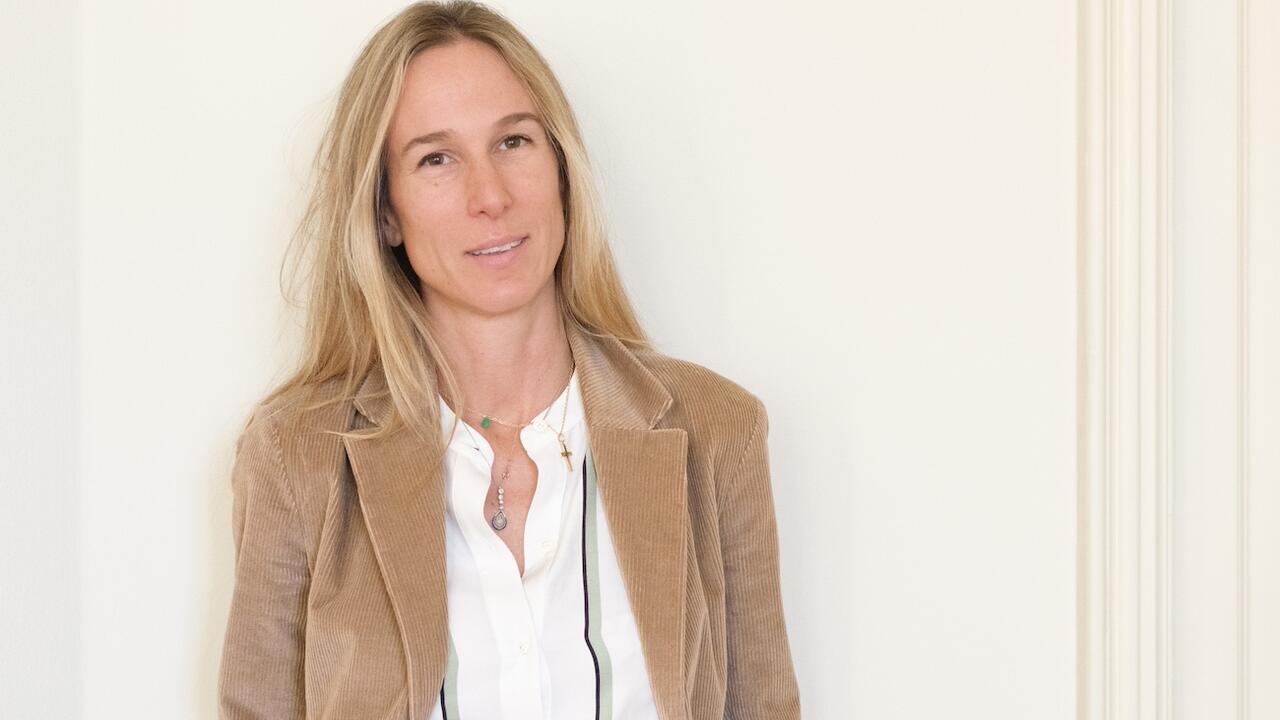Katherine Bradford Sees Mothers and Children in Paint
In her show at the Frye Museum, Seattle, the artist’s ‘Mother Paintings’ highlight the role of caring and vulnerability today
In her show at the Frye Museum, Seattle, the artist’s ‘Mother Paintings’ highlight the role of caring and vulnerability today

Daniel Gerwin What is in your ‘Mother Paintings’ [2020–ongoing] that you would not have included if you weren’t a mother?
Katherine Bradford There is a kind of touching between family members – heads on laps, hands on shoulders, arms around each other – that I had found myself incorporating into the postures and poses of the groups that I painted. I then realized that they must be family.
DG Your ‘Mother Paintings’ portray caring: a shift from your superhero paintings that focus on a figure flying alone, or the swimmers who are together but don’t nurture each other directly.
KB The 2020 paintings deliberately took note of the global pandemic. In the past, I wanted to make art about my private, inner world. I did several small sign-like paintings consisting of the words ‘Protect Your Inner Life’, because I didn’t see myself as an artist who was responding to and tackling the headlines. Once COVID-19 took over in 2020, I saw that all our relationships, especially within the family, were strongly altered. We had all became much more vulnerable. I wanted to reflect and explore that.

DG The imagery toggles between the mother protecting her kids and escaping from the weight of that responsibility.
KB There is a streak of seeking freedom and independence from being a mother, and also from having the very strong-willed mother I grew up with. A few years ago, I made a painting called Mutiny [2020]; it’s a subject I find exciting. Along with Mutiny, I’ve done several paintings with titles like Runaway Wife [2022].
DG In your son Arthur’s essay ‘How Her Twins Remember’ from your 2018 catalogue, he quotes your daughter Laura saying the swimmers are also portraits of your own mother. Do the ‘Mother Paintings’ integrate your experience of being a child?
KB Yes, when I titled my show ‘Mother Paintings’ [2021], I wanted to evoke a broad meaning of ‘mother’, that included the fact that we all have a mother. (It was pointed out to me that there are now many types of families and that I should take note of that.) My own mother is the clearest example I have of a mother figure, surpassing my own experience in the role. My mother could see inside her children and gave us guidance, while also serving as a strong model to rebel against. She was a deliberate and noble character, and my daughter is right that I see her in a bathing suit among her friends at the beach.

DG You start your canvases abstractly. How did you begin seeing mothers and children in the paint?
KB I have always been conscious of the rectangle and how to organize my composition in relation to it. The figures posed a problem because they were so upright, so vertical, and I often sought ways to bring in a horizontal. It helped to make the figures sitting down, and that was the beginning of discovering the great possibility of a person’s lap, and the fact that I could place people on it. This all occurred around 2020, and one day I smiled to myself thinking that during this dark time we all wanted a lap to sit on. Not only that but we were all capable of offering a lap and being the comforter.
DG In art history mother and child pairs tend to be syrupy, though Alice Neel is a notable exception. But your images are more formal, which keeps them away from sentimentality.
KB Alice Neel painted from observation, and I use formal ideas taken from abstraction. It occurs to me that some people might think including mothers and children is nevertheless sentimental. I’m also part of the gay community and I’m struggling a bit as to how to include my relationship with my spouse, Jane, as part of a family model. I’d like to keep abreast of how families and couples are presented now. I’m also struggling with how to represent gender and race and have deliberately made my figures multicoloured and somewhat androgynous.

DG During your first eight years in New York, before your kids went to college, were you dismissed by the art world because you were not only a woman but a mother?
KB I did feel dismissed by the art world which was tough and judgmental. The biggest problem was that I had to be home at night which was when all the openings were happening. When I gave slide lectures, I did not mention my children, ever.
Now I show a picture of myself early on holding the twins soon after they were born, as if to say, ‘Here’s where I started.’ In recent years I always end my lectures with pictures of my grandchildren making art in my barn studio and often it is these images that people remember and comment on.
DG What would you say to younger artists who are worried that starting a family will destroy their opportunity to make art?
KB I’ve said, perhaps not often enough, that having a family is wonderful, and that artists who have children have the best life possible. ‘Hang in there,’ I say to young women. Your children will grow up and, God willing, you will be able to have lots of time in your studio and you will have the great satisfaction of having children around you.
‘Flying Woman: The Paintings of Katherine Bradford’ is currently on view at the Frye Museum, Seattle until 14 May 2023.
Main Image: Katherine Bradford, Mother Joins the Circus - Second Version, 2021, acrylic on canvas, 152 ×183 cm. Courtesy: the artist and Canada gallery























